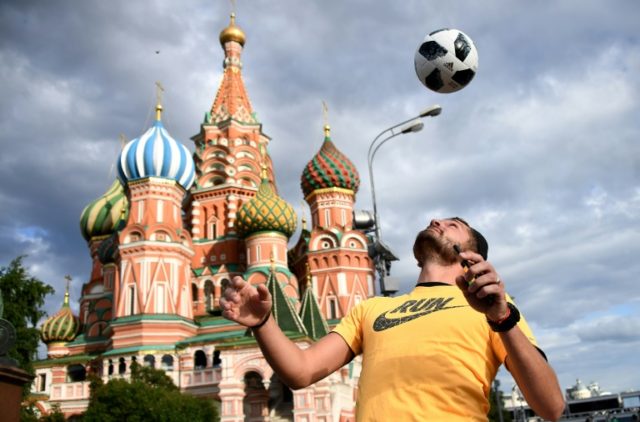Frankfurt am Main (AFP) – Although World Cup teams will be as boldly emblazoned with logos as ever, sportswear makers see little hope this year of repeating sales leaps that greeted past tournaments in iconic football nations like Germany and Brazil.
“There is no doubt that the World Cup in Russia does carry lower financial opportunities than the similar event four years ago in Brazil,” acknowledged Kaspar Rorsted, chief executive of Adidas — the German firm that has supplied footballs to the event since 1970.
Like US competitor Nike, a force in football since the United States-hosted World Cup in 1994, Adidas hopes above all to polish its brand image in 2018, and neither company has set hard sales targets.
Russia suffers from a double handicap in the megabrands’ eyes: football is far from being the cultural juggernaut there it is in western Europe, and the country suffers from an international image that is at best mixed.
“There’s less likelihood that it will be a resounding festival of football” in Russia as there was in Germany in 2006 or Brazil in 2014, said Markus Voeth, professor of marketing at the University of Hohenheim.
“The best thing for Adidas would be a World Cup in western Europe,” agreed Commerzbank analyst Andreas Riemann.
“With the tournament happening in Russia, the boost will likely be small” for sportswear sales.
– From Iran to Argentina –
Adidas goes into the World Cup with a numerical advantage, sponsoring 12 of the 32 teams including Russia, Germany, Argentina, Spain and Iran, while Nike’s squad numbers 10 from France to Brasil — two fewer than last time around.
But more individual players will be striding onto the pitch in boots bearing the US firm’s swoosh, including Portugal star Cristiano Ronaldo.
As for Puma, Adidas’ hometown rival since the two firms’ foundings in the late 40s by two brothers, just four teams will be wearing the leaping cat ensign, half as many as in 2014.
Nevertheless, the Bavarian underdog hopes to shine with carefully-chosen player sponsorships like French striker Antoine Griezmann.
Shelling out for sponsorship is a big bet on boosting sales: Adidas spends 50 million euros ($59 million) per year on Germany’s Mannschaft alone, out of a global marketing budget of around 2.5 billion euros.
What’s more, “for every euro you spend on a sponsorship contract, you have to spend another on communications about the fact you’re a sponsor, probably even twice that these days,” said Philippe Nanopoulos, a marketing researcher at the EM Strasbourg business school.
Adidas turned to a roster of designers or musicians like Pharrell Williams as well as football stars in a recent campaign, which raked in 38 million views on YouTube.
Meanwhile, Nike drummed up former Brazil champion Ronaldo for a nostalgia-freighted ad dedicated to the Selecao.
– Deflating sales –
While the names and the logos may be big, the business reality is that football accounts for a shrinking share of major firms’ turnover.
Adidas made just 2.0 billion euros of its 21.2 billion in revenue last year from the beautiful game, while Nike racked up $2.0 billion out of almost $28 billion in overall sales.
Nevertheless, Russia 2018 will be “a fantastic opportunity to bring our brand to life globally,” Adidas boss Rorsted said — a relatively vague hope echoed by Nike chief Mark Palmer.
Commerzbank’s Riemann expects a 2.0-percent boost to Adidas’ total sales from the World Cup over the final quarter of 2017 and first half of this year.
“It will be less for Nike, since football weighs less heavily in the Americans’ business,” he added.
But the number of jerseys, shorts and shoes flying off shelves “will also depend on how things go on the field,” predicted marketing expert Voeth.
“If a team wins, the country will feel a huge explosion of the popularity of sport, and provide a huge opportunity for youth to actually do more sports,” said Nike football chief Bert Hoyt.
“There will be more people interested in our products and innovation. The big thing is that it’s a motivating, a galvanising moment for a country.”

COMMENTS
Please let us know if you're having issues with commenting.